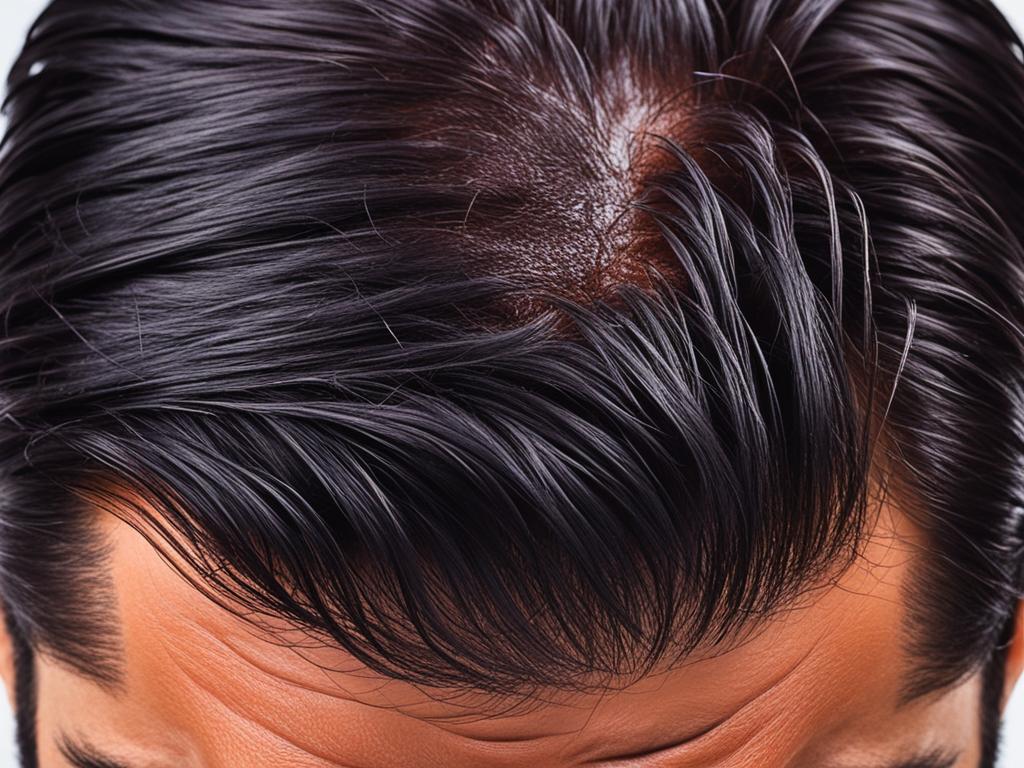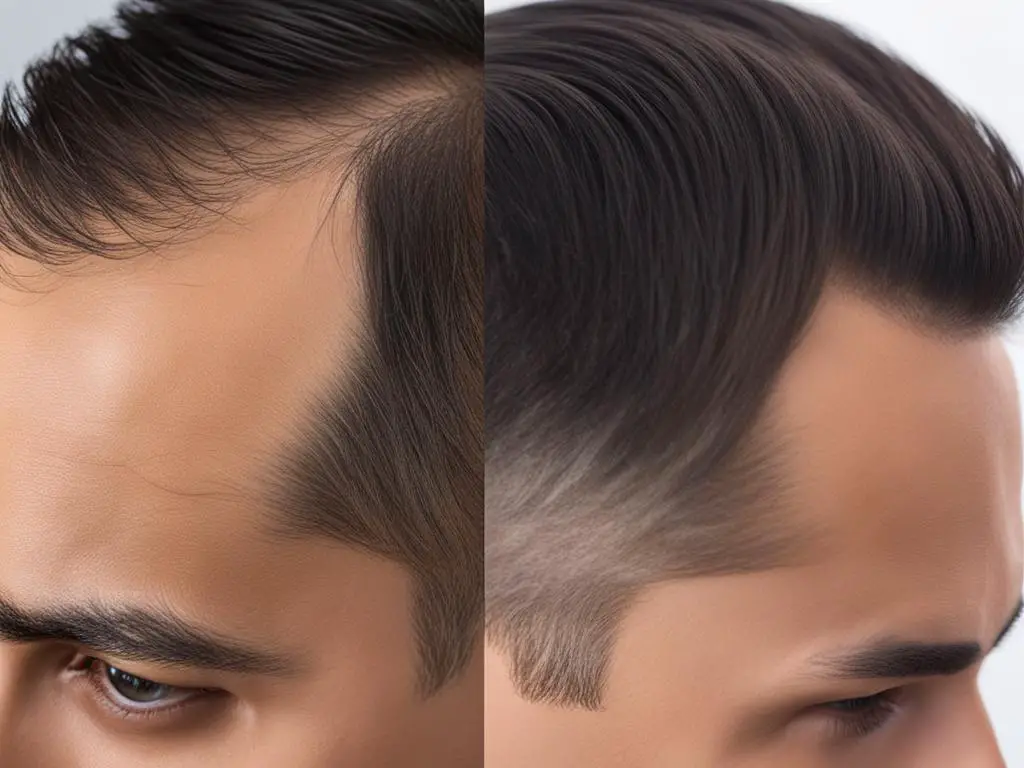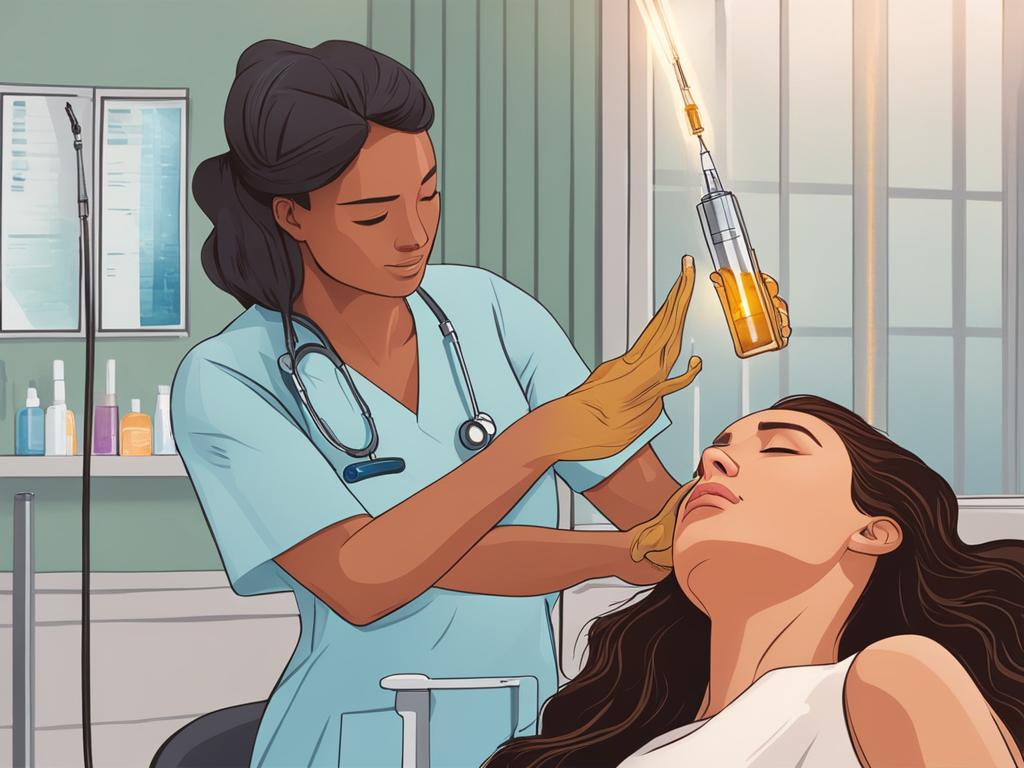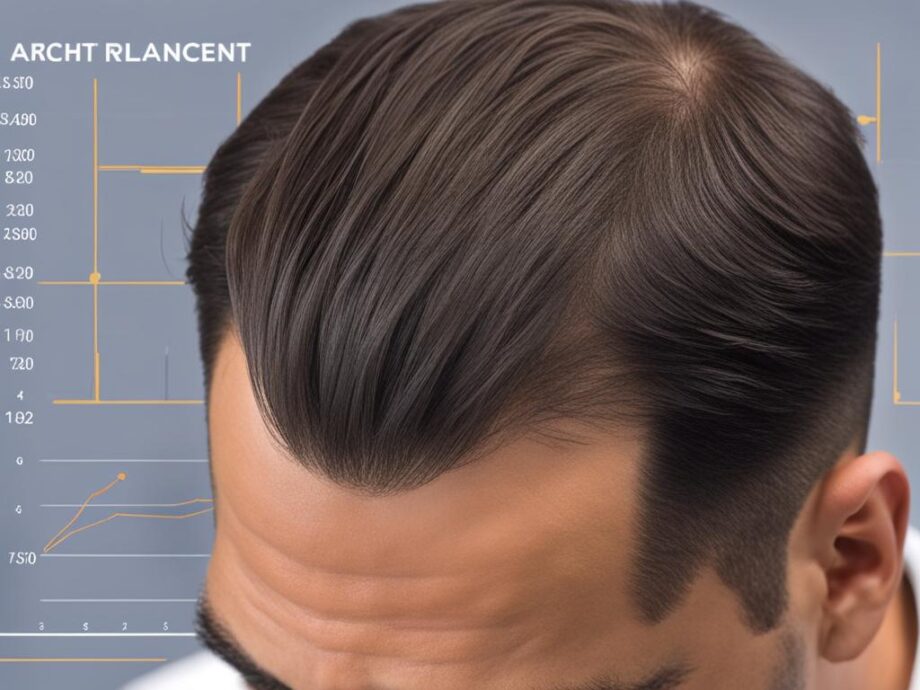If you’re experiencing hair loss, you’re not alone. According to the American Academy of Dermatology, 80 million Americans suffer from hereditary hair loss. Fortunately, there are effective hair loss treatments available, including PRP therapy and hair transplants.
PRP therapy and hair transplants are two of the most popular methods for hair restoration. Both treatments come with their merits, but which one is best for you? In this article, we will compare PRP therapy with hair transplants to help you understand the benefits and differences between these two effective solutions for hair loss treatment.
Key Takeaways:
- PRP therapy and hair transplants are effective hair loss treatments.
- PRP therapy is a non-surgical hair treatment that uses the patient’s own blood to promote hair growth.
- Hair transplants are surgical procedures that transplant hair follicles from one part of the body to the balding area.
- PRP therapy is less invasive and requires less recovery time than hair transplants.
- The choice between PRP therapy and hair transplants depends on various factors, including individual preferences and the extent of hair loss.
Understanding PRP Therapy
If you’re experiencing hair loss, you may be considering PRP therapy as a non-surgical hair growth treatment. This innovative therapy involves injecting your own platelet-rich plasma, which can improve the health and growth of your hair follicles. By using your own blood, there’s no risk of an allergic reaction, making it a safe and effective treatment.
The procedure typically involves three steps: drawing blood, separating the platelet-rich plasma from the blood, and then injecting the plasma into the scalp. The PRP solution contains concentrated amounts of growth factors that stimulate the hair follicles and promote hair growth. These growth factors also improve the overall health and condition of your hair.

PRP therapy is a desirable option as it’s a non-surgical hair treatment with fewer risks and side-effects than surgery. Additionally, it’s a quick and easy out-patient procedure with no downtime, allowing you to resume your daily activities immediately after the treatment. The results may vary from person to person, but typically, multiple treatments over several months are required to achieve optimal hair growth and restoration.
Exploring Hair Transplants
Hair transplants are a popular option for individuals seeking a permanent solution for hair loss. This surgical procedure involves taking hair follicles from a donor site, typically the back of the head, and transplanting them onto the bald or thinning areas. There are different techniques for hair transplantation, including follicular unit extraction (FUE) and follicular unit transplantation (FUT).
FUE involves extracting individual hair follicles and transplanting them to the recipient area, while FUT involves removing a strip of hair from the donor site and dividing it into individual grafts for transplantation. FUE is less invasive and typically results in fewer complications, whereas FUT can be more effective for individuals requiring a larger number of grafts.

One of the benefits of hair transplants is that they provide a permanent solution for hair loss. Unlike other hair restoration options that need to be repeated, hair transplants offer a long-lasting solution. The transplanted hair is also natural-looking, and the results can be customized to meet the individual’s needs and preferences.
Comparing PRP vs FUE Hair Transplant
While both PRP therapy and hair transplants offer effective solutions for hair loss, there are differences to consider when deciding which option is best suited for you. The table below compares PRP therapy with FUE hair transplants:
| PRP Therapy | FUE Hair Transplant | |
|---|---|---|
| Procedure Type | Non-surgical | Surgical |
| Downtime | Minimal | Several days |
| Recovery Time | Quick | Several weeks to months |
| Results Duration | May require multiple sessions | Permanent |
| Cost | Low to moderate | High |
Ultimately, the decision between PRP therapy and hair transplants depends on individual preferences, hair loss extent, and other personal considerations. Consulting with a qualified hair specialist can help you determine the best option for your specific needs.
Benefits of PRP Therapy
PRP therapy, or platelet-rich plasma therapy, provides an effective hair growth treatment that is gaining popularity due to its natural and non-invasive approach. The process involves using platelet-rich plasma, extracted from the patient’s own blood, to promote hair growth and improve the overall health of the hair follicles. The benefits of PRP therapy for hair loss treatment are outlined below:
- Promotes natural hair growth: PRP therapy stimulates the production of hair growth factors, which promotes the natural growth of hair.
- Strengthens existing hair: PRP therapy nourishes and strengthens hair follicles, reducing hair breakage and thinning.
- Improves thickness and density of hair: By enhancing the overall health of hair follicles, PRP therapy can improve the density and thickness of hair.
- Supports healing and graft survival: PRP injections can enhance the success of hair transplants by supporting the healing process and ensuring graft survival.

To fully understand the benefits of PRP therapy, it is important to consult with a qualified hair loss specialist who can assess your individual needs and determine whether PRP therapy is right for you.
Benefits of Hair Transplants
Hair loss can be a challenging experience, but with hair transplants, you can enjoy a long-lasting solution that restores your hair and confidence. If you’re considering a hair transplant, here are some benefits to keep in mind:
- Provides a permanent solution for hair loss
- Ensures natural-looking results
- Restores hair in the areas of transplantation
- Requires minimal maintenance
- Transplanted hair can be styled and treated just like natural hair
A hair transplant is an effective way to address hair loss and restore your hair’s natural look and feel. Whether you’re experiencing hair loss due to genetics, aging, or other factors, a hair transplant can provide a reliable and long-lasting solution.
Take a look at some before and after pictures to see the incredible results that hair transplants can achieve:
With hair restoration services, you can achieve the look and confidence you desire. Consider speaking with a hair loss specialist to explore your hair transplant options and determine the best solution for your individual needs.
Differences Between PRP Therapy and Hair Transplants
When considering hair loss treatment options, it’s important to understand the differences between PRP therapy and hair transplants. One of the main differences is that PRP therapy is a non-surgical procedure, while hair transplants involve surgery.
PRP Therapy: This non-surgical treatment involves drawing the patient’s blood, separating the platelet-rich plasma, and injecting it into the scalp to promote hair growth. PRP therapy is less invasive and has a shorter recovery time compared to hair transplants.
Hair Transplants: These surgical procedures involve transplanting hair follicles from one part of the body to bald or thinning areas. Hair transplants offer permanent results and a natural-looking appearance. However, they require more invasive surgery and longer recovery time.
Ultimately, the decision between PRP therapy and hair transplants depends on the individual’s preferences and needs. Consulting with a qualified hair loss specialist can help determine which treatment option is best for you.
Choosing the Right Option for You
Deciding between PRP therapy and hair transplants can be challenging. The extent of hair loss, personal preferences, and medical considerations are all important factors to consider. It’s essential to consult a qualified hair loss specialist who can evaluate your needs and recommend the best treatment.
If you prefer a non-surgical hair treatment, PRP therapy is an excellent option. This treatment can promote hair growth and improve the overall health of your hair follicles.
On the other hand, if you’re looking for a permanent solution to hair loss, hair transplants may be a better option. This surgical procedure provides long-lasting results and can restore hair in bald or thinning areas.
Comparing PRP Therapy and Hair Transplants
To help you decide between these two treatment options, the table below highlights some of the key differences:
| Treatment Type | PRP Therapy | Hair Transplant |
|---|---|---|
| Procedure Type | Non-surgical | Surgical |
| Recovery Time | Minimal | Several Days to a Week |
| Duration of Results | Varies | Permanent |
| Nature of Results | Natural-looking | Natural-looking, Permanent |
| Pain and Discomfort | Minimal | Mild to Moderate |
Ultimately, your decision will depend on your individual needs and preferences. Consulting with a hair loss specialist is the best way to determine which hair loss treatment is right for you.
Remember: the benefits of PRP therapy and hair transplants are numerous, and both treatments provide effective solutions for hair loss.
Conclusion
When it comes to hair loss treatment, both PRP therapy and hair transplants are effective options. PRP therapy offers a non-surgical approach that can stimulate natural hair growth and improve the overall health of hair follicles. On the other hand, hair transplants provide a permanent solution for thinning or balding areas, with natural-looking results that require minimal maintenance.
Ultimately, the best option for you depends on several factors, including the extent of hair loss, personal preferences, and medical considerations. It’s important to consult with a qualified hair loss specialist to determine which treatment is right for you. With their expertise, you can make an informed decision and choose a treatment plan that aligns with your goals and lifestyle.
FAQ
How does PRP therapy work for hair loss?
PRP therapy involves drawing blood from the patient, separating the platelet-rich plasma (PRP), and injecting it into the scalp. The growth factors in PRP promote hair growth and improve the overall health of the hair follicles.
What are the benefits of PRP therapy for hair loss?
PRP therapy promotes natural hair growth, strengthens existing hair, and improves the thickness and density of the hair. It can also enhance the success of hair transplants by supporting the healing process and ensuring graft survival.
How does a hair transplant work?
Hair transplants involve taking hair follicles from one part of the body and transplanting them onto bald or thinning areas. Different techniques, such as follicular unit extraction (FUE) or follicular unit transplantation (FUT), are used to achieve this.
What are the benefits of hair transplants?
Hair transplants provide a long-lasting, permanent solution for hair loss. They offer natural-looking results and require minimal maintenance. The transplanted hair can be styled and treated just like natural hair.
What are the differences between PRP therapy and hair transplants?
PRP therapy is a non-surgical procedure that is less invasive and has a shorter recovery time compared to hair transplants. PRP therapy stimulates hair growth, while hair transplants provide a permanent solution for hair loss.
How do I choose the right hair loss treatment option?
The choice between PRP therapy and hair transplants depends on factors such as the extent of hair loss, personal preferences, and medical considerations. It’s important to consult with a qualified hair loss specialist to determine the best treatment option for your individual needs.
